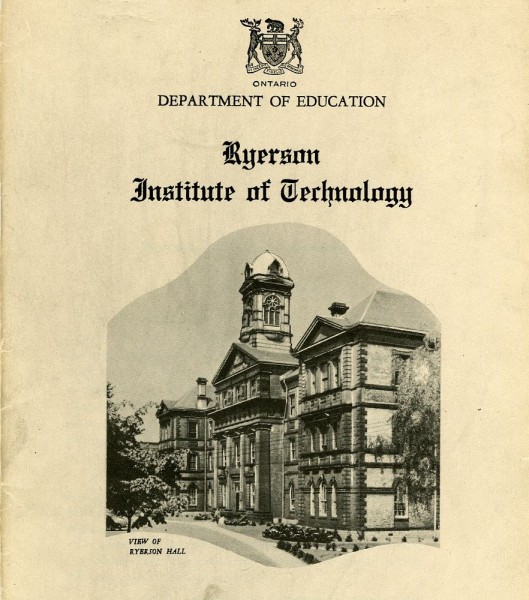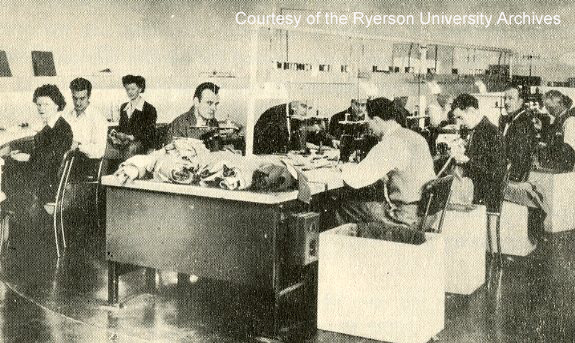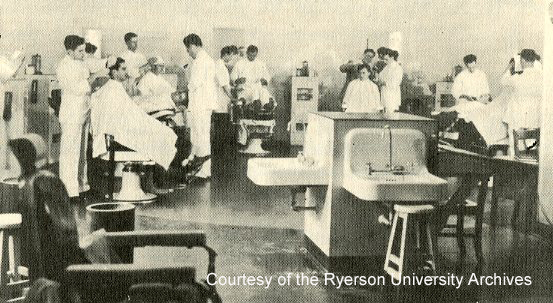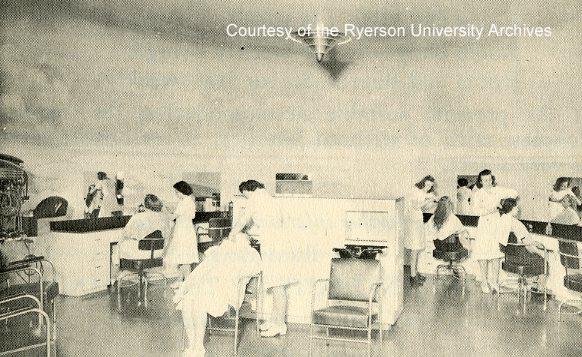Toronto Metropolitan University offers more than 100 undergraduate and graduate programs, and is home to more than 40, 000 students and 2700 staff and faculty. But how many students attended Ryerson the first year it opened? What kinds of courses were available for students to take and are any of them still offered today? Let’s take a look back at the first year of the Ryerson Institute of Technology.
1948-1949
When the Institute opened its doors to approximately 200 students in September of 1948, it was one of four technical institutes run by the Department of Education for the Province of Ontario. The other 3 were: The Institute of Textiles (Hamilton); The Institute of Mining (Hailebury); and The Lakehead Technical Institute (Port Arthur).
It offered 4 different options for education: technological courses; extension courses; courses supervised by Department of Education for other governmental departments; and courses for the University of Toronto.
Technological courses
There were 10 schools that first year that offered 2 year diploma and certificate courses on the level between high school and university. Admission requirements were a minimum of a grade 12 education or an equivalent standing based on age, practical experience, and educational background. Fees were a $5 registration fee, a $25 tuition, a $10 laboratory or shop fee, and a $10 Students’ council fee. For non-resident British subject students tuition was $200, and for non-resident non-British subject students tuition was $300.
The schools were:
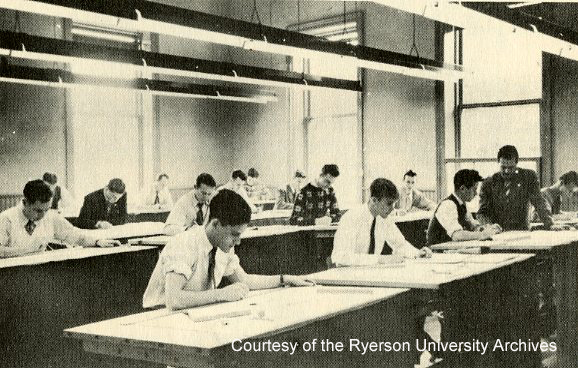
School of Architectural Draughting – architectural and structural draughting and design
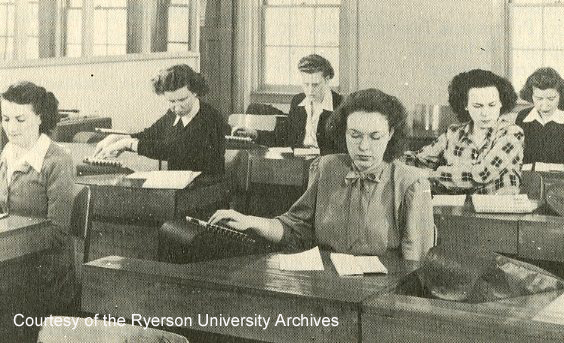
School of Business – retail merchandising and business machines
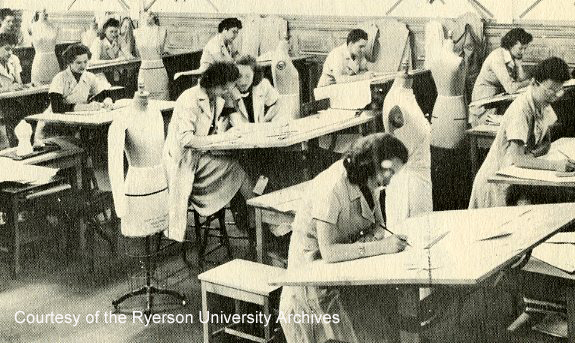
School of Costume Design – dressmaking, pattern making, draping, and designing
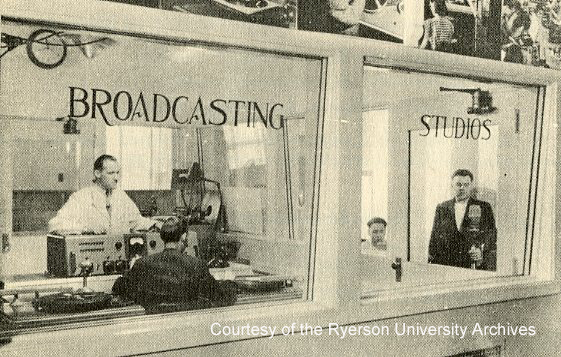
School of Electronics – radio communications, radio and appliance servicing, industrial electronics, electronic laboratory practice, marine operating, announcing and production
School of Food Technology – commercial cooking and commercial baking
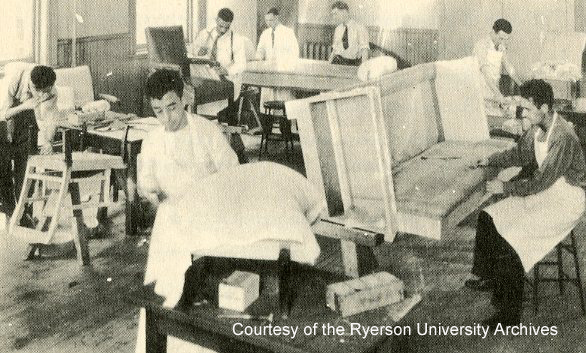
School of Furniture Crafts – cabinetmaking, upholstering, wood finishing, and furniture design
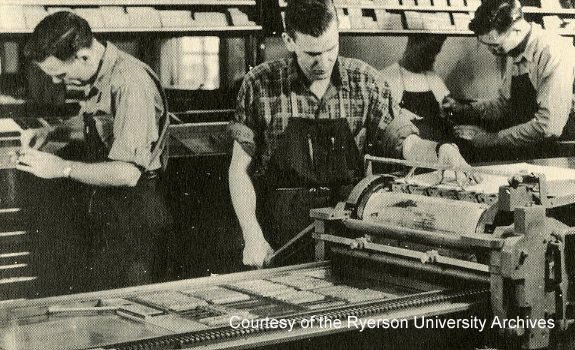
School of Graphic Arts – hand composition and typography, letterpress presswork, linotype, intertype, monotype, photo lithography, offset presswork, printing design and layout, bookbinding, and journalism
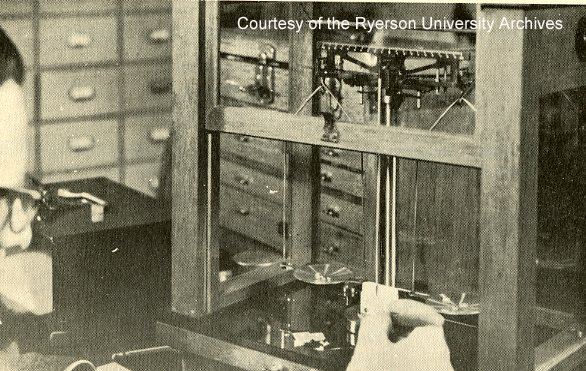
School of Jewellery and Horology – goldsmithing and gem setting, watch making and repair
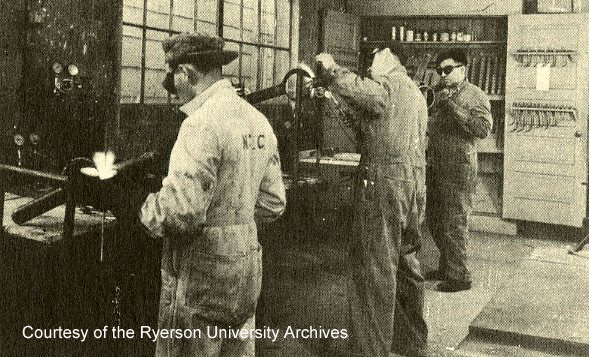
School of Industrial and Mechanical Technology – general mechanical, tool design, tool and die making, mechanical drafting, and welding
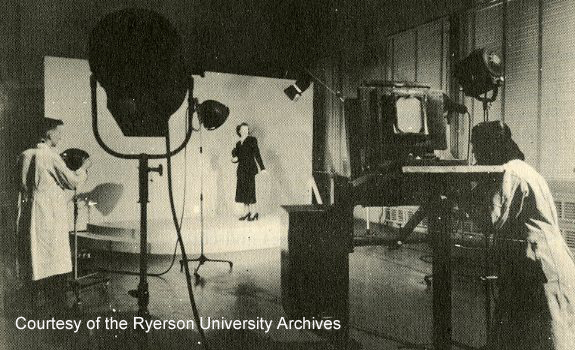
School of Photography – portraiture, commercial, and industrial
With the exception of the School of Jewellery and Horology, all of these schools evolved into programs offered by Ryerson today.
Extension Courses
Ryerson also offered 2 extension courses at the trade level. They were Men’s tailoring, and Women’s tailoring. The Admission requirements were a grade 10 or equivalent education and you had to be at least 16 1/2 years old. Course fees were the same as the Technology courses.
The extension department evolved in to the present day G. Raymond Chang School of Continuing Education. The school now offers 88 certificate programs, and accreditation courses for 10 professional institutes and associations.
Department of Education supervised courses
Housed at Ryerson were courses offered by the Department of Labour and the Department of Health, which varied in length from 2 months to 9 months. Admission requirements, course of study, standards of attainment, and final exams were the responsibility of the sponsoring department. The Department of Education supplied the staff and supervised the courses. All the courses were trade courses. They were:
Department of Labour
Apprenticeship courses in building trades, millroom, and motor vehicle repair trade (2-3 months)
Barbering (9 months)
Hairdressing (9 months)
Stationery Engineering (9 months)
Department of Health
Certified Nursing Assistant course (9 months)
Courses for the University of Toronto
Offered by Ryerson, in co-operation with the University of Toronto, were 2 courses for their students.
Occupational Therapy – printing and woodworking
Institutional Management – commercial cooking
To learn more about Ryerson’s beginnings drop by Archives and Special Collections on the 4th floor of the Library in LIB 404
